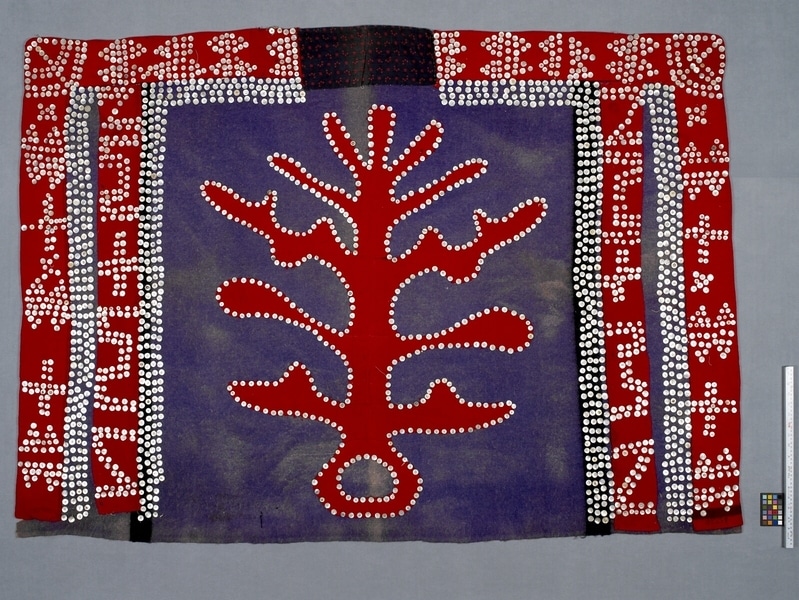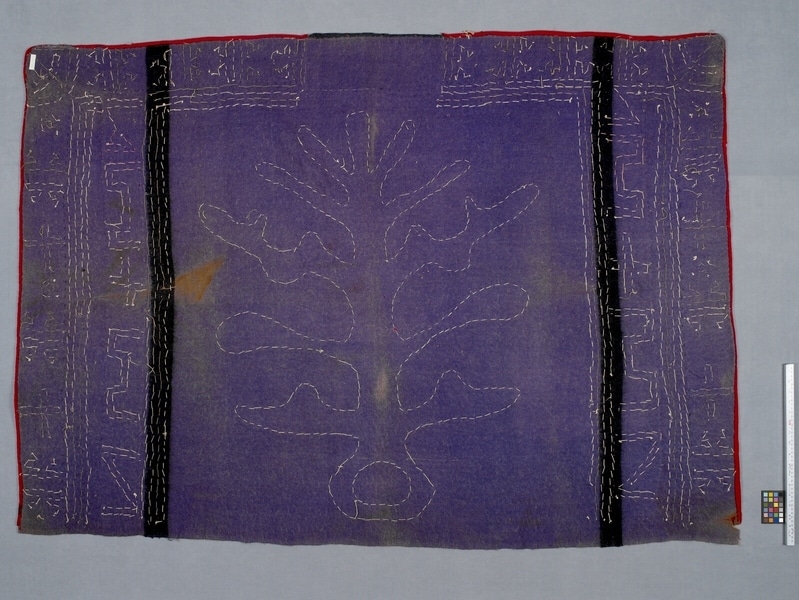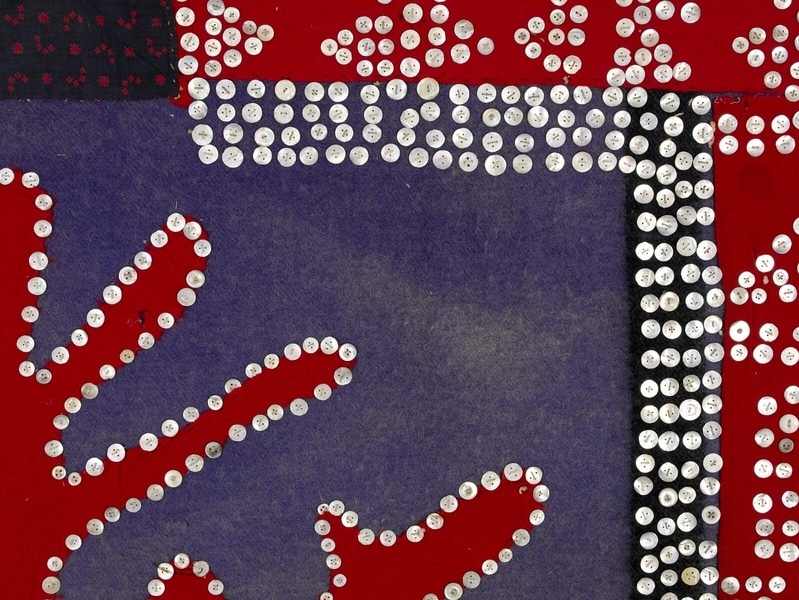Button Blanket Item Number: A3730 from the MOA: University of British Columbia



Description
Button blanket made of a large blue wool blanket. Black band at each end, and a wide red woolen flannel border sewn to both sides and across the top, with a section cut out at the neck and inserted with dark blue and red cotton. Another wide red flannel band is sewn from top to bottom on each side, along the edge of the blanket's black band. This whole border design section is heavily decorated with button designs. The main crest design is a red flannel tree of life design. There is a manufacturer's stamp mark on the bottom of the red flannel border.
History Of Use
The traditional crest-style button blanket ceremonial robe proclaims hereditary rights, obligations, and powers through the depiction and display of family crests. The design becomes the property of the family and cannot be copied. The documentation for each crest is known and recited at feasts where those attending verify its prerogatives and obligations. Before Europeans introduced manufactured cloth to the coast in the 1700s, the indigenous peoples made their ceremonial robes from animal hides. Button blankets were used increasingly from the latter part of the 19th century among the coastal nations, from northern Vancouver Island to the Alaska Panhandle.
Cultural Context
ceremonial
Specific Techniques
For contemporary blankets, the design is applied to a template which is used to cut out the applique material. Women sew the robes. The tree of life design was cut in 7 sections, sewn together, and then appliqued onto the background blanket material and decorated with buttons or sequins.
Iconographic Meaning
Emblems or crests distinguish different social groups (lineages, phratries, or moieties) and symbolize their privileges. They can be shown on any material possessions, such as totem poles or robes, and each group owns the right to display specific crests. Within each group, families or individuals have the right to show the general crests is specific ways. According to Simon Dick, the tree of life design is one of the predominant crests of the Kwakwaka'wakw. It is shared with different families, and no particular village has tried to take responsibility for the origin of the crest.
Item History
- Made in British Columbia, Canada
- Collected in Kingcome Inlet, British Columbia, Canada and Ukwanalis, British Columbia, Canada
- Owned by Alfred Dawson before January 14, 1953
- Received from Alfred Dawson (Seller) and H. R. MacMillan (Funding source) on January 14, 1953
What
- Name
- Button Blanket
- Identification Number
- A3730
- Type of Item
- blanket
- Material
- shell, bone ?, cotton fibre, wool fibre and dye
- Manufacturing Technique
- cut and sewn
- Overall
- height 133.0 cm, width 190.0 cm
Who
- Culture
- Kwakwaka'wakw
- Previous Owner
- Alfred Dawson
- Received from
- Alfred Dawson (Seller) and H. R. MacMillan (Funding source)
Where
- Holding Institution
- MOA: University of British Columbia
- Made in
- British Columbia, Canada
- Collected in
- Kingcome Inlet, British Columbia, Canada and Ukwanalis, British Columbia, Canada
When
- Ownership Date
- before January 14, 1953
- Acquisition Date
- on January 14, 1953
Other
- Item Classes
- textiles
- Condition
- fair
- Accession Number
- 1857/0003